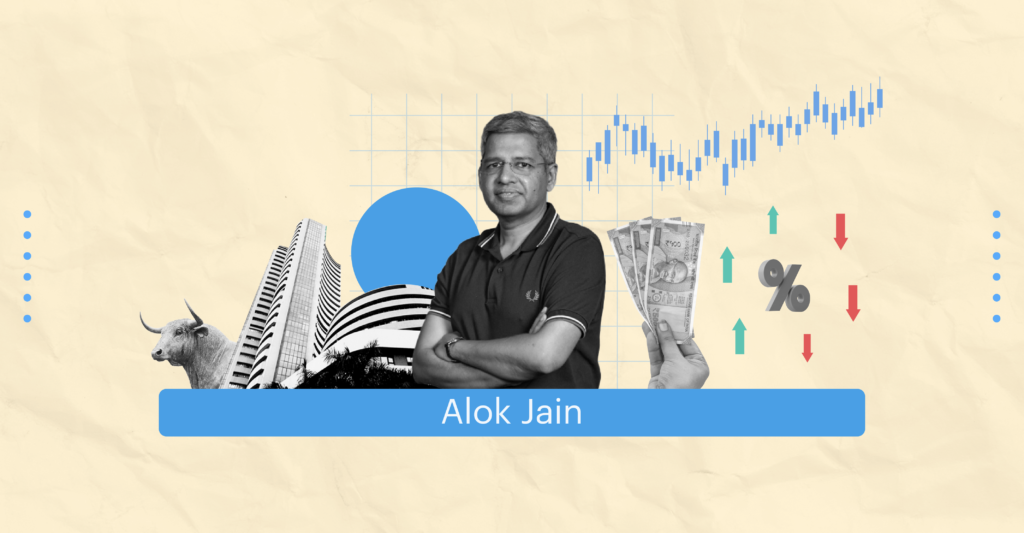Last Updated on Nov 7, 2022 by
Investing is an exciting journey that has the potential to take you towards your financial independence, provided you stay focused, disciplined and try to keep things simple. Many folks enter the market with humongous expectations and are often disappointed. If there is anything we learned from our journeys, do remember that the market doesn’t exist only to give you what you want. It will take its own course of action, and you as an investor should always try to stay focused, do your SIPs regularly, keep things simple and allow yourself enough time to succeed in the markets. Trust me – this is certainly possible.
Before getting into this article, we would like to clarify that we are a SEBI registered Research Analyst, not an advisor. So do contact an advisor before making any decisions.
In this article, we will try to focus on 4 important data-backed pointers one should always keep in mind before starting your investing journey. No worries if you are already in the market, these points will still help you.
The first and most important aspect is to try and assess your goals and risk appetite before entering the market. This has to be done early on so that you do not invest the money that may be needed soon. It is better if you do not disturb the money invested in markets for as long as possible to allow yourself an opportunity to experience compounding.
Table of Contents
1. The importance of thinking long term
This is Nifty 50 between July 2021 to October 2022. You can see immense volatility right. Someone who might have started their journey around September 2021 must have gone through a decent bit of turbulence. By the end of the 12-month period, they must have felt frustrated seeing that their returns were zero while everyone else told them that markets could be highly rewarding.
Now see Nifty 50 on a monthly time frame. Isn’t it extremely obvious that markets have only been going up? This is the power of thinking long-term. Let us show you some interesting data to nail this pointer a bit harder.
The above chart is Nifty’s Rolling CAGR for various periods ranging from 1 to 15 yrs since December 1995. Access the full interactive chart using this link.
If you are new to Rolling Returns, do check this article out. One thing becomes clear from this data, the longer you stick around in the markets, the larger the probability of you having a fruitful journey. In any given 7-yr period, you would never have lost money in the markets. If you spent 15 yrs, you would have made double-digit CAGR in each 15-yr period.
What is more interesting is the fact that you would still have achieved a CAGR of 11% between 2005 and 2020, which saw many phases of turbulence like
- The 2008 global financial crisis – 65% fall
- 25% fall in 2015
- 38% fall in 2020 (COVID crash)
Despite all these hiccups, coming out with a CAGR of 11% between 2005 and 2020 is phenomenal, right? That is exactly the power of spending long periods in the markets.
2. SIP is absolutely incredible – Do not ignore the power of SIP
There are only 3 things that can happen after you invest
- Markets go up
- Markets stay flat
- Markets go down
A SIP wins in 2 out of the 3 scenarios mentioned above. Lump sum beats SIP only when markets go straight up after your investment.
We have explained this in extremely simple words using many examples in this video.
Moreover, we can prove that you would still make money even if you started investing from market tops like – the 2008 global financial crisis crash, the 2015 fall or the 2020 COVID crash, which we have explained here.
SIPs also play a very crucial role in removing anchoring bias (over reliance on what one originally thinks).
So be consistent and regular with your SIPs and try to increase the SIP amount each year with an increase in your income for better results.
3. Beware of drawdowns
Drawdowns can be an absolute nightmare. Surprisingly, not many folks understand drawdowns properly. We at WeekendInvesting firmly believe that one must have some idea about an approximate potential downside to the investment. Are there any plans in place, if at all, market tanks? Is there a proactive measure taken to tackle weak market situations?
Maximum drawdown is defined as the maximum drop from a peak. This gives a view of the largest fall the portfolio has witnessed from a peak. Current drawdown is the distance to the peak. This reflects on the recent performance of the strategy and showcases how far below the portfolio is from the highest peak achieved. If the current drawdown is 0% continuously, the portfolio is currently on an uptrend and regularly hits new peaks. On the flip side, if the current drawdown is equal to the max drawdown or is in a tight range closer to the max drawdown, it suggests a downward trend in the portfolio.
Below is a tabular description of what is happening each year’s end.
You can read this blog to understand drawdowns in detail. The crux of this point is that the lower the drawdowns, the better the chances of outperformance in the long run. Our strategies, for instance, either stick to the strongest stocks in their respective universes (rotational momentum) or efficiently move to cash (absolute momentum) as per the market conditions. So, check the historical drawdowns of a strategy if that is available before you start your journey.
Here’s another example of two strategies with the same returns but different drawdowns. I’ll let you chew on this for a while.
4. The four-point checklist
- What to buy?
- When to buy?
- How much to buy?
- When to sell?
If you are unable to interpret the first three points, we’re sure the above four rules can save you from making a few mistakes and try to shorten your learning curve.
- What to buy – Be clear on what to buy every time before you buy a stock. The reason for buying that stock should be crystal clear and one should have absolutely no ambiguity in this regard. If at all you’re unsure, leave that stock and move to the next stock.
- When to buy – At what point should you add a stock to your portfolio is a very important question you should ask yourself. When does the stock enter your portfolio? Is it now or later? There must be absolute clarity on “when”.
- How much to buy -What quantity do you add to a particular stock? How much weightage does it hold in your overall portfolio? Why should a stock hold a certain weightage in your portfolio?
- When to sell – Perhaps the most important rule is exiting at an appropriate juncture without losing or giving up on the gains. Have a clear plan that defines a proper exit plan for the stock you already hold or wish to purchase. Not having a clear exit plan is almost suicidal and can cause massive drawdowns.
While there can be plenty more points, we wanted to highlight these crucial aspects that can create the right mindset for a fulfilled, long-lasting journey.
We also made a two-part data-backed series on sureshot ways to win in stock markets which can surely set you on the right track before you start your journey – Part 1 | Part 2.
This article is written by Alok Jain, the Founder of Weekend Investing. He has been in the Indian stock markets for more than 27 years now & is passionate about building mechanical trading and investing models that can generate superior returns. Check smallcases by WeekendInvesting here.




